Kimchi: Learn How to Make This Fermented Food
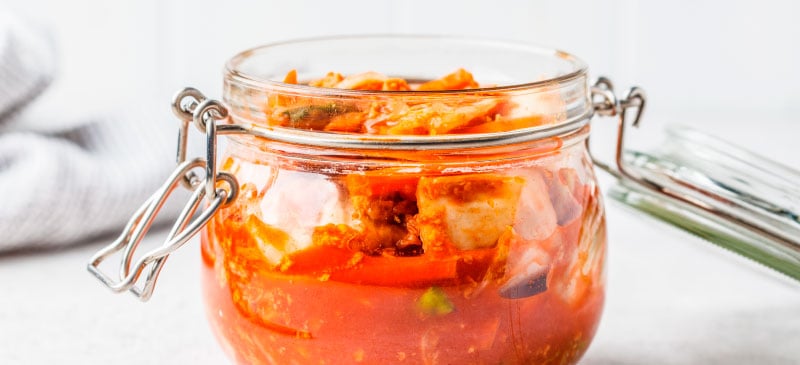
What is kimchi? Also called gimchi or kimchee, it is a traditional, fermented, probiotic food that is a staple Korean side dish. Dating back hundreds of years, there are dozens of different recipes for making kimchi, but nearly all have several vegetables and seasonings in common that give it its signature taste.
Some of the main kimchi ingredients include Napa cabbage, radish, scallion, cucumber and red chili paste. Other major components that are considered healthy, functional foods include garlic, ginger and red pepper powder.
Today, kimchi is considered Korea’s “national dish” — in fact, on average people in Korea consume about 40 pounds of kimchi per person, per year. Never tried it before? If you like cultured vegetables and fermented foods like sauerkraut, you’ll probably love kimchi, too.
What does kimchi taste like? It tastes spicy and sour due to the fermentation process that produces live and active “probiotic cultures,” which are responsible for some of its benefits, including improving digestion and raising immune function.
What Is Kimchi?
Kimchi is a traditional side dish and staple of Korean cuisine. It consists of fermented and salted vegetables, most commonly Napa cabbage and Korean radishes with a variety of flavorful and spicy seasonings.
How long does it take to ferment kimchi? In order for kimchi ingredients to actually become a true kimchi, they must undergo a traditional fermentation process inside tightly sealed glass jars. This takes place anywhere from several days to several months. During this time, the flavors, textures and health benefits of kimchi dramatically change and improve. That is why this food is now growing in popularity worldwide as a “superfood.”
Is kimchi good for health? According to a 2014 report published in the Journal of Medicinal Foods, the fermentative byproducts formed during fermentation and the functional ingredients used to make kimchi significantly boost its benefits because these are responsible for forming the probiotics.
The fermentation of kimchi is carried out by various microorganisms present in the raw materials, including lactic acid bacteria (LAB). Specifically, strains of Lactobacillus, Leuconostoc and Weissella are believed to be the primary types of probiotics produced during the fermentation of this food.
According to the book, “Regulating Safety of Traditional and Ethnic Foods,” a compilation from a team of experts in food safety, nutrition and regulatory affairs, “Kimchi is also regarded as a hygienically safe food because pathogenic bacteria and contaminations are almost completely removed during its preparation and fermentation.”
A 2018 scientific review highlights some of the potential benefits of kimchi according to scientific studies to date:
- Stimulates immune function
- Decreases disease-causing pro-oxidants and free radicals
- Reduces the occurrence of certain cancers
- Anti-aging
- Wards off cardiovascular disease
- Lowers metabolic syndrome risks
- Improves intestinal flora
Beginning in the early 20th century, health researchers began to speculate that probiotic foods contained proteolytic microbes that worked in the colon to reduce toxic substances responsible for the aging process. They theorized that consuming fermented foods like benefit-rich kefir and yogurt coat the colon with LAB bacteria, decreasing intestinal pH, suppressing dangerous bacteria and leading to a slower rate of aging. Since this time, numerous studies have suggested this to be true of many different cultured foods.

Benefits
1. Provides Probiotics that Help Improve Digestion
We hear about the benefits of probiotic foods like yogurt and sauerkraut all the time, but don’t overlook kimchi, which has tons of these gut-friendly bacteria, too. Responsible for giving it its carbonation, sour taste and pungent smell, probiotics develop during fermentation as bacterial enzymes that are able to rapidly reproduce from thriving off of the sugar molecules found in the vegetables.
The longer kimchi ferments, usually the greater the health benefits and higher concentration of probiotics that develop. But remember that “real” kimchi also has to be refrigerated and unpasteurized for the probiotics to remain intact.
While fermenting the vegetables, probiotic LAB develops. Many bacteria are involved in the fermentation of kimchi, but LAB becomes most dominant while other less-beneficial bacteria become suppressed thanks partially to the salting of the cabbage. The addition of other sub-ingredients like garlic and ginger, plus the rise in LAB during the fermentation, is what helps to ensure that it is safe to eat since this process kills pathogenic bacteria.
Repopulating “good” bacterial microflora of the gastrointestinal (GI) tract can play an important role in preventing the pathophysiology of some GI disorders, according to the Division of Digestive and Liver Diseases at Columbia University College of Physicians and Surgeons.
To put it frankly, this fermented food can “keep you regular” and help you poop! But that’s not all. Probiotics have been used as a natural digestive treatment modality for over a century because beneficial probiotic bacteria strains help reduce harmful bacteria in the gut that can cause indigestion, inflammation and even hormonal changes.
Fermented foods are useful for anyone suffering from common digestive issues like constipation or more serious conditions like candida virus, leaky gut syndrome and autoimmune disorders. The efficacy of probiotics, either as a single strain or a combination of probiotics found in some cultured foods, has been shown to be beneficial in antibiotic-associated diarrhea, clostridium difficile colitis, infectious diarrhea, ulcerative colitis, Crohn’s disease, pouchitis and irritable bowel syndrome, among other disorders.
2. Helps Increase Immunity
Because 70 percent to 80 percent of the immune system is actually stored within the gut, probiotic-rich kimchi can help you fight bacterial infections, viruses, common illnesses and serious chronic conditions, too.
Potential probiotic benefits have been have been seen in the treatment or prevention of:
- Diarrhea
- Eczema
- Irritable bowel syndrome (IBS)
- Ulcerative colitis
- Crohn’s disease
- H. pylori (the cause of ulcers)
- Vaginal infections
- Urinary tract infections
- Recurrence of bladder cancer
- Infection of the digestive tract caused by Clostridium difficile
- Pouchitis (a possible side effect of surgery that removes the colon)
Aside from containing probiotics, kimchi is full of ingredients that are known to stimulate healthy immune function. Similar to the benefits of cayenne pepper, red pepper powder has anti-carcinogenic and antioxidant effects. It’s even capable of helping food avoid spoiling since it contains natural antibacterial properties.
Garlic is another immune system booster that inhibits the activities of many harmful viruses, fights fatigue and lowers inflammation. It has been considered a food for promoting longevity for thousands of years as well. Ginger is a time-honored beneficial ingredient that helps soothe the digestive organs, nourish the gut, fight bacteria and help you heal quicker from being sick.
And finally, cabbage is an anti-inflammatory, antioxidant-packaged cruciferous vegetable that provides vitamin A, vitamin C, vitamin K and other important nutrients. Certain biochemicals, including isocyanate and sulfide, that are found in Chinese cabbage and radishes are effective in helping prevent cancer and detoxifying heavy metals in the liver, kidney and small intestine.
Yet another benefit of kimchi is the prebiotic fibers found in the cabbage, radishes and other ingredients that are capable of helping to enhance immune function, especially in the digestive organs.
3. High in Fiber
Kimchi is made primarily of vegetables. Vegetables provide a good dose of dietary fiber that’s both filling and good for digestive and heart health. Cabbage is especially a good source of fiber. It is high in volume, yet low in calories and carbs.
The average fiber intake for U.S. children and adults is less than half of the recommended amount, yet we know that individuals with high intakes of dietary fiber appear to be at significantly lower risks for developing coronary heart disease, stroke, hypertension, diabetes, obesity and certain gastrointestinal diseases.
Diets that include more high-fiber foods, especially vegetables, are linked to lower blood pressure and serum cholesterol levels, improvements in glycemia and insulin sensitivity, and significantly enhanced weight loss. Increasing fiber in your diet can help you eat less overall since it swells up, absorbs water and makes you feel full.
Even small amounts of kimchi can help you reach your fiber quota for the day and give you a nice dose of probiotics in the process. Try using it on some of your favorite recipes as a healthy condiment.
4. Low in Calories and Can Help Reduce Cravings
Many people find that consuming fermented foods helps kill their sugar addiction, improves digestion and helps with appetite regulation. If weight loss is your primary goal, luckily kimchi is very low in calories but high in nutrients and satiating fiber. It might even be able to help improve metabolic function. Its spicy red pepper flakes are known to cause warming, thermogenic effects inside the body.
Probiotic supplements and foods are now being linked with reductions in weight and body fat. Recent studies suggest that manipulation of the microbial ecosystem in the gut might even be a new novel approach in the treatment of obesity. In the future, we might see that treatment options for helping reduce overeating and obesity might consist of altering the compositions of the microbial communities of obese individuals.
How are probiotics related to weight gain or loss? Short-chain fatty acid production and low-grade inflammation have been found to be important underlying mechanisms of action that influence appetite, metabolism and body weight. These are highly connected to gut health.
This means that finding the most effective combination and dosage rate of probiotic microorganisms will likely be able to help those who struggle with controlling cravings, regulating appetite hormones and fighting impulses to overeat.
5. Provides Antioxidants that Can Help Fight Cancer
Kimchi is chock-full of anti-inflammatory foods and spices that are known to be cancer-fighting foods. They promote overall better health and longevity and slow down oxidative stress. For example, different color varieties of cabbage can contribute a range of important antioxidant and anti-inflammatory compounds to your diet.
Garlic, ginger, radishes, red pepper and scallions are also high in antioxidant properties that help lower inflammation. Anti-inflammatory foods are important for preventing chronic diseases associated to oxidative stress, such as cancer, cognitive disorders and coronary artery diseases.
Research suggests that the compound capsaicin, which is contained in the red hot pepper powder, helps reduce the chance of developing lung cancer. Several population studies demonstrate an association between an increased intake of garlic (and onions) and reduced risk of certain cancers, including cancers of the stomach, colon, esophagus, pancreas and breast.
In addition, the indole-3-carbinol contained in Chinese cabbage has been linked to decreased gut inflammation and colon cancer.
Nutrition Facts
A 100-gram serving of Napa cabbage kimchi contains approximately:
- 33.9 calories
- 7 grams carbohydrates
- 1.1 grams protein
- 0.4 gram fiber
- 805 international units vitamin A (16 percent DV)
- 7.5 micrograms vitamin K (9 percent DV)
- 0.2 milligram manganese (9 percent DV)
- 4.4 milligrams vitamin C (7 percent DV)
- 29.5 micrograms folate (7 percent DV)
- 0.1 milligram vitamin B6 (5 percent DV)
- 0.7 milligram iron (4 percent DV)
Uses in Traditional Medicine
Does kimchi taste sour? According to Ayurveda, it is considered a sour food that can be helpful in balancing the Vata dosha. The taste of sour foods is believed to encourage good digestion, boost energy and aid in the elimination of excess wind in the body (think symptoms like bloating and gas). It’s also thought to generally enliven the senses.
Probiotic-rich foods have a rich history in Asia so it’s no surprise that Traditional Chinese Medicine (TCM) values kimchi for its beneficial probiotic effects on the digestive and immune systems.
Kimchi has been served daily at virtually all meals in Korean households for thousands of years. The benefits of probiotics found in this fermented food and other foods have only become common knowledge in more recent years. For all these centuries, people in Korea have been consuming a traditional food that truly doubled as a traditional medicine whether they realized it or not.
History
Kimchi, first called ji, was born during the pre-modern period of the Three Kingdoms of Korea. It was first made using just cabbage and beef stock — a simple and resourceful recipe using widely available and inexpensive ingredients.
Although red chilis are what give it its signature color and spice, this ingredient wasn’t actually available in Korea until the Europeans introduced it to Asian countries after originally finding it in the Americas. Koreans first had access to red chili after the Japanese invasions of 1592–1598. It then became a staple ingredient not only in kimchi, but many other Korean recipes, too.
As the national dish, kimchi has played an important role in Korean cuisine for hundreds of years. During South Korea’s involvement in the Vietnam War, for example, the Korean government requested that Americans help feed the hungry and desperate South Korean troops with this fermented food, because it was said to be “vitally important to the morale of Korean troops.” Because it is able to help kill intestinal bacteria and improve immunity, it was vital for troops living in harsh environments that didn’t contain many nutrients.
This probiotic food can be categorized by its main ingredients, regions where it originally stems from and seasons. Korea’s northern and southern sections have a considerable temperature difference. This has affected the availability of various vegetable and spice ingredients. A recipe from the northern parts of Korea tends to have less salt and red chili. It usually does not include brined seafood for seasoning like a Korean recipe from southern Korea typically does.
Other variations in these recipes are due to changes in the seasons, which over the years led people to use fermentation as a way of preserving vegetables that were in season and overly abundant. Before modern refrigeration existed, kimchi was a great way to reduce spoilage and prolong freshness of harvested ingredients, like fresh vegetables and herbs in summer or nutrient-dense sweet potatoes in the cooler months.
Today, even though specialty “kimchi refrigerators” are sometimes used in Korea that have precise controls to keep different varieties at optimal temperatures, many Koreans continue to prepare it according to honored traditional and seasonal preparation methods.
Kimchi vs. Sauerkraut
Kimchi and sauerkraut are two powerhouse fermented foods with cabbage as their star ingredient. Just like with kimchi, the kind of sauerkraut you want to buy is the type that’s been prepared in the traditional way and is refrigerated in order to preserve the live and active cultures.
The same process used to make kimchi (lactic acid fermentation) is also used to make sauerkraut. When fermented optimally, both are rich sources of beneficial probiotics and enzymes.
Both of these cabbage-centric delights are typically described as salty and sour. Can you eat kimchi on its own? Kimchi and sauerkraut are most often consumed as accompaniments to larger dishes, but you can totally eat them by themselves.
A good homemade sauerkraut typically only contains two ingredients: cabbage and salt. You can also include some caraway seeds like in this sauerkraut recipe. Homemade kimchi involves not only more ingredients (around 10), but a little more effort as well.
How to Use
If you’re wondering where to buy kimchi, you can find jarred kimchi in health food stores and specialty Asian grocery stores. Some major chain grocery stores now carry it too.
There are typically three kimchi products you an choose from in stores: 1) freshly-packed items of salad-type kimchi (called Geotjeori–fresh kimchi, seasoned, without fermentation); 2) refrigerated items of fermented kimchi; and 3) fermented, pasteurized items of shelf-stable kimchi. I highly recommend choosing the second option, which is most health-boosting. Opt for fermented but not pasteurized kimchi.
Although having it with traditional Korean foods like rice and proteins might be the first thing that comes to mind, you can also get creative with this food and use it in savory pancakes, on top of burgers, with eggs, on tacos and many other ways, too.
Once you purchase it or make your own, you may have some of these common kimchi-related questions:
- Is kimchi supposed to be fizzy? Should kimchi bubble when opened? It is very common for it to be fizzy or bubbly. It’s a result of the fermentation process.
- Does kimchi expire? Yes, any store-bought variety will come with an expiration date.
- How long does kimchi last? An opened container can last in the fridge for up to three months while an unopened container can last up to 12 months.
- Is my kimchi rotten? As it starts to go bad, it will begin to taste and smell pungently sour. As with any food, if you see anything strange growing in your kimchi or it really tastes off in a bad way, then, of course, be safe and get rid of it immediately.
- How long does kimchi last unrefrigerated? You always want to store it in the fridge unless you are in those first days of creating homemade kimchi (more on that below). Remember that “real” kimchi has to be refrigerated and unpasteurized for the probiotics to remain intact.
How to Make Kimchi
Throughout Korea, and other parts of the world where Koreans have formed smaller concentrated pockets, numerous kimchi recipes have been formed. Today, it’s possible to find hundreds of different preparation methods available worldwide, all determined by the length of fermentation, main vegetable ingredients and the mix of seasonings used to flavor the dish.
The most common seasonings in a traditional kimchi recipe include brine (salty water), scallions, red chili, ginger, chopped radish, shrimp or fish paste, and garlic — all of which pack in flavor and make this food stand out in any dish.
How do you make homemade kimchi? You can try making your own at home using this simple recipe below. How to make kimchi is really not as hard as you might think!
Risks and Side Effects
As with anything, even healthy foods, you don’t want to overdo it on your consumption. As a fiber and probiotic-rich food, too much may result in gas or bloating. If you’ve never eaten it before, start off with a small quantity.
Salt is used in the creation of kimchi so check with your doctor before adding it to your meals if you are following a low-sodium diet.
Print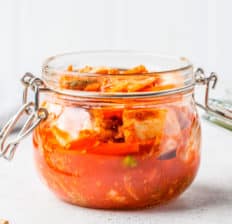
Homemade Kimchi Recipe
- Total Time: 2–5 days
- Yield: 1 quart 1x
- Diet: Gluten Free
Description
Kimchi is a traditional side dish and staple of Korean cuisine. It consists of fermented and salted vegetables, most commonly Napa cabbage and Korean radishes with a variety of flavorful and spicy seasonings. Learn how to make it!
Ingredients
- 1 medium head Napa cabbage or purple cabbage
- ¼ cup Himalayan or Celtic sea salt
- ½ cup water
- 6 finely chopped garlic cloves
- 1 teaspoon fresh grated ginger
- 1 teaspoon coconut sugar
- 2 to 3 tablespoons seafood flavor like fish sauce (or use more water to make this a vegan kimchi)
- 1 to 5 tablespoons Korean red pepper flakes (depending on how spicy you like it)
- 8 ounces Korean radish or daikon radish, peeled and cut finely
- 4 scallions, trimmed and cut finely
Instructions
- Slice the cabbage lengthwise into quarters and remove the cores. Then slice into fine strips.
- Add your salt to the cabbage in a large bowl. Use your hands to massage the salt into the cabbage until it starts to become soft and give off water. This might take several minutes.
- Let the cabbage stand for 1 to 2 hours, then rinse it under water for several minutes. Combine the garlic, ginger, coconut sugar and fish sauce (or water) in a small bowl. Mix to form a smooth paste, then add it to the bowl with cabbage.
- Add the chopped radish, scallions and seasoning paste. Then massage all the ingredients together using your hands until they are coated. Pack the mixture into a large glass jar and press down on it until the brine rises to cover the vegetables.
- Make sure to leave at least 1–2 inches of space and air at the top of the jar (important for fermentation). Tightly close the lid and keep the jar standing at room temperature for 1 to 5 days.
- Check your homemade kimchi once a day, pressing down on the vegetables if need be to keep them submerged under the liquid brine. Taste it after several days to see how if it has become sour enough to your liking. If not, let it continue for several more days before storing in the refrigerator sealed for up to 3 months.
- Prep Time: 20 min
- Category: Snacks, Side Dishes
- Method: Fermentation
- Cuisine: Korean
Nutrition
- Serving Size: 0.5 cup
- Calories: 54
- Sugar: 5.9g
- Sodium: 290mg
- Fat: 0.6g
- Saturated Fat: 0.1g
- Unsaturated Fat: 0.3g
- Trans Fat: 0g
- Carbohydrates: 12.1g
- Fiber: 3.4g
- Protein: 2.4g
- Cholesterol: 0mg



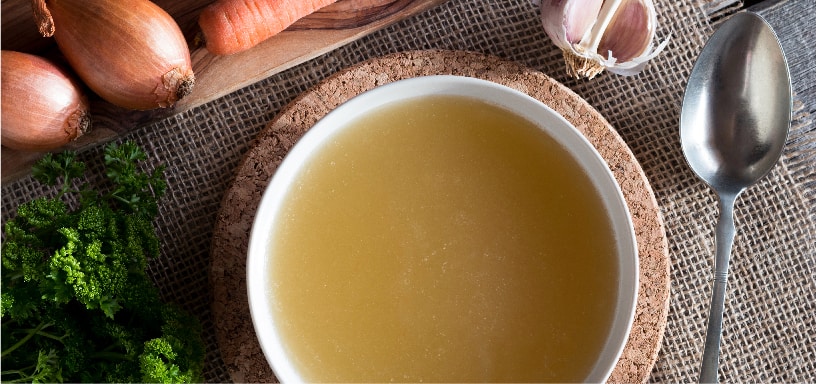
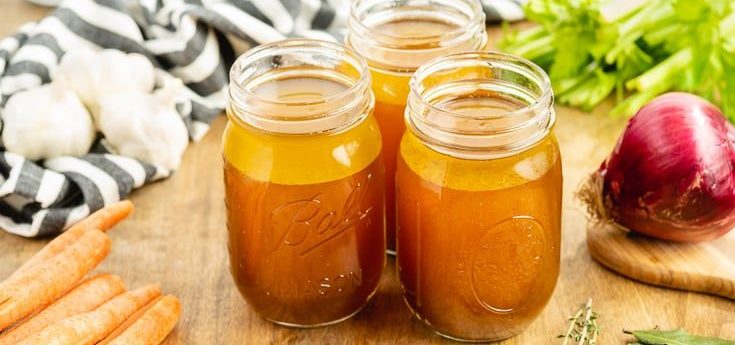

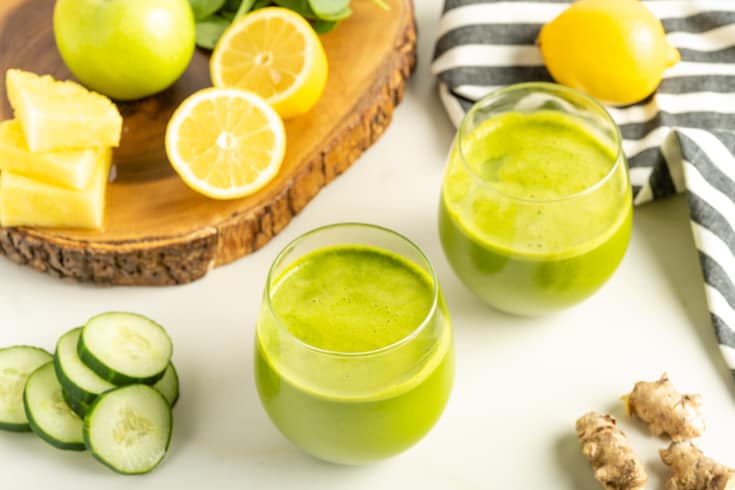



Comments
Please keep comments under 200 characters.